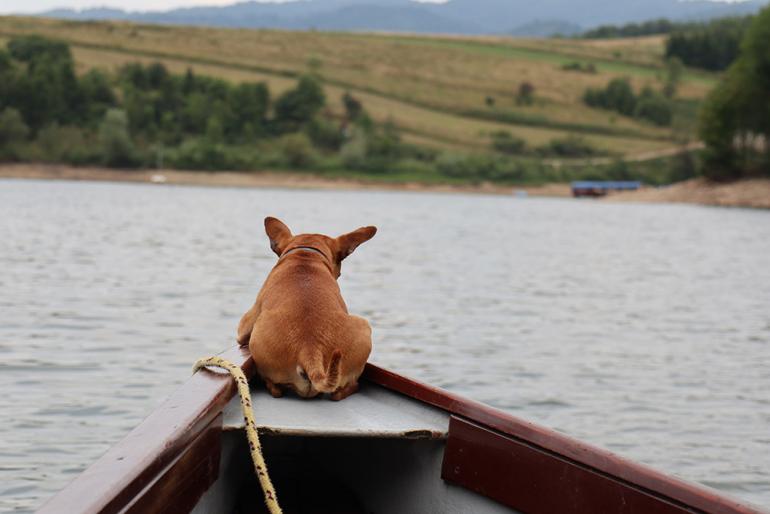How Stella Got Her Groove Back
A dog's rough day on the river.
The early days of inducting my dog Stella into the pleasures of drift boating left me feeling like a dog abuser. Being from New Zealand, she had never seen a drift boat, much less been in one. Rivers were a place she associated with chasing sticks and having fun. That was all about to change. She and I were now residents of Paradise Valley, Montana, doing what the locals do, and both on a steep learning curve.
On her first excursion to the Yellowstone, Stella bounced around in the sand as we launched the boat. Chasing magpies and shadows, she was blissfully unaware of the horrors that were just minutes away.
When the boat was ready, rods rigged, cooler secured, and oars in place, I whistled out. Stella bounded over, stick in mouth, ready for our usual game of fetch. Dropping the stick at my feet, she sat with tongue lolling and looked up at me expectantly. “Come on girl,” I said in an encouraging tone, patting the boat’s gunnels. She’s smart, my dog, and the expression on her face changed as she realized what was about to happen. Forgetting the stick, she beat a hasty retreat back toward the truck.
The next 10 minutes were spent alternatively cajoling and threatening her, drawing on the full range of our doggy-management arsenal to persuade her into the drift boat. Having none of it, Stella literally dug her toes into the sand and made herself as heavy as possible. We finally resorted to manhandling her across the beach and depositing her unceremoniously into the bottom of the boat. Stoically ignoring the disapproving stares of other river users at the put-in, including better-adjusted dogs that looked down their muzzles at Stella’s antics, we launched out into the current.
That first voyage was stressful, with an anxious dog climbing into awkward places and trying to squeeze through impossibly small gaps in her search for stability. Stella’s position of choice was to bury her head deep in my lap and do an allover body quiver, the kind usually reserved for a visit to the vet. This made rowing awkward, but worked as long as she kept her head down and I didn’t have to do any full-body rowing maneuvers.
River life has gotten better for Stella. A Portuguese Water Dog she is not, but she has found her balance in the boat and learned to remain calm when things get wobbly. Our management of her on the river has also improved. We have become stricter, take plenty of treats, and have “land time” when she begins to get restless. A leg stretch, game of stick, and a snuffle around the inevitable beaver lodge gives us another hour or so of undisturbed river time.
Initially we created a bed for her in the stern out of harm’s way. Being a social creature, it wasn’t long before she was climbing past (read: “over”) the rower in an effort to get back into the middle of the action. Trial and error resulted in a space for her behind the front fishing seat on a sleeping mat. There is room to spread out here, and when curiosity outweighs her need to keep a low center of gravity, she can sit up without getting an oar to the head. The front bench provides shade, and she is away from the fishing action.
Why didn’t we just leave her at home after the first excursion and save all the bother? Call her a slow learner, but at the height of her fear, Stella was still desperate to get into the truck whenever we hooked up the drift boat. Despite my misgivings—in the face of her enthusiasm—I couldn’t leave her behind. She is my family, a lifeline to home, and a significant part of my successful adjustment to life in Montana.
Stella can now hold her head up in the ranks of well-adjusted aquatic canines, having made the midlife transition from greenhorn to drift-boat veteran. Just as well, on our return to New Zealand we intend to take up coastal sailing. Who said old dogs can’t learn new tricks?










